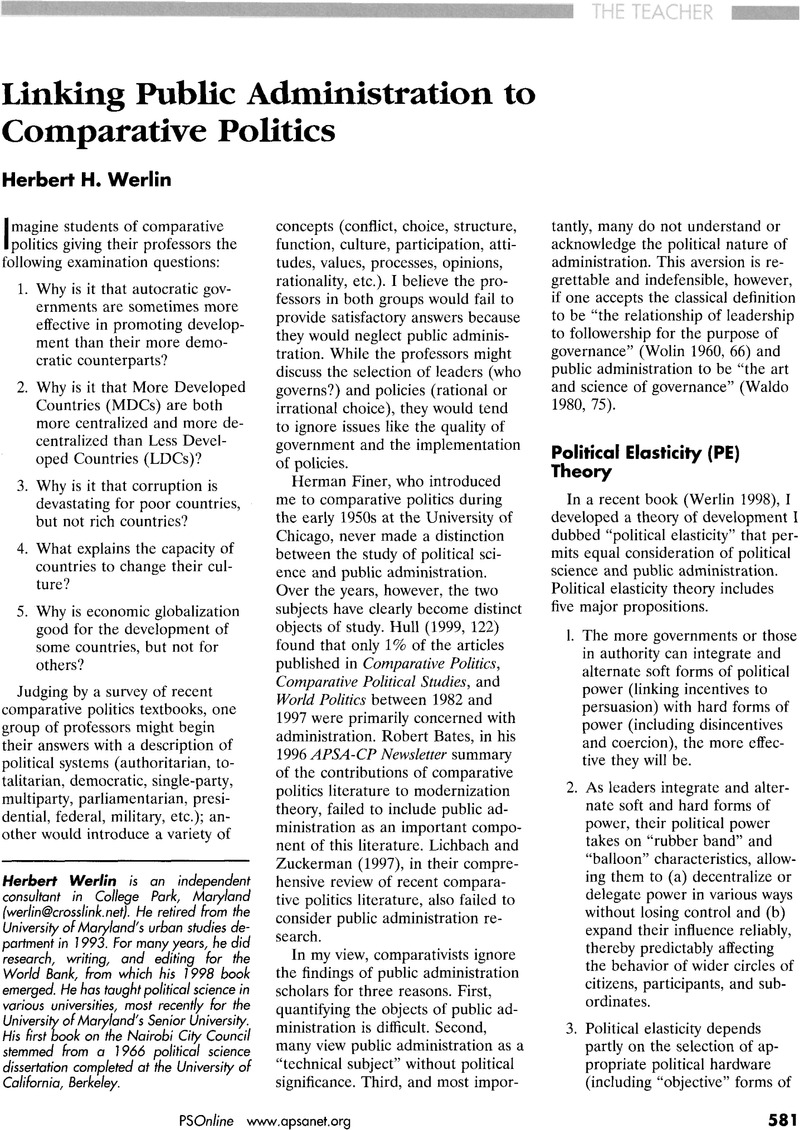Crossref Citations
This article has been cited by the following publications. This list is generated based on data provided by Crossref.
Werlin, Herbert H.
2001.
Bureaucracy and Democracy: An Essay in Memory of Dwight Waldo.
Public Administration Quarterly,
Vol. 25,
Issue. 3,
p.
290.





